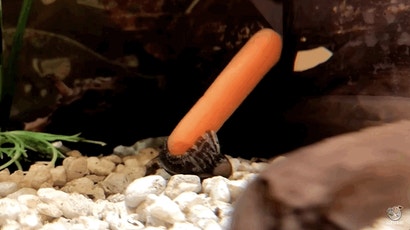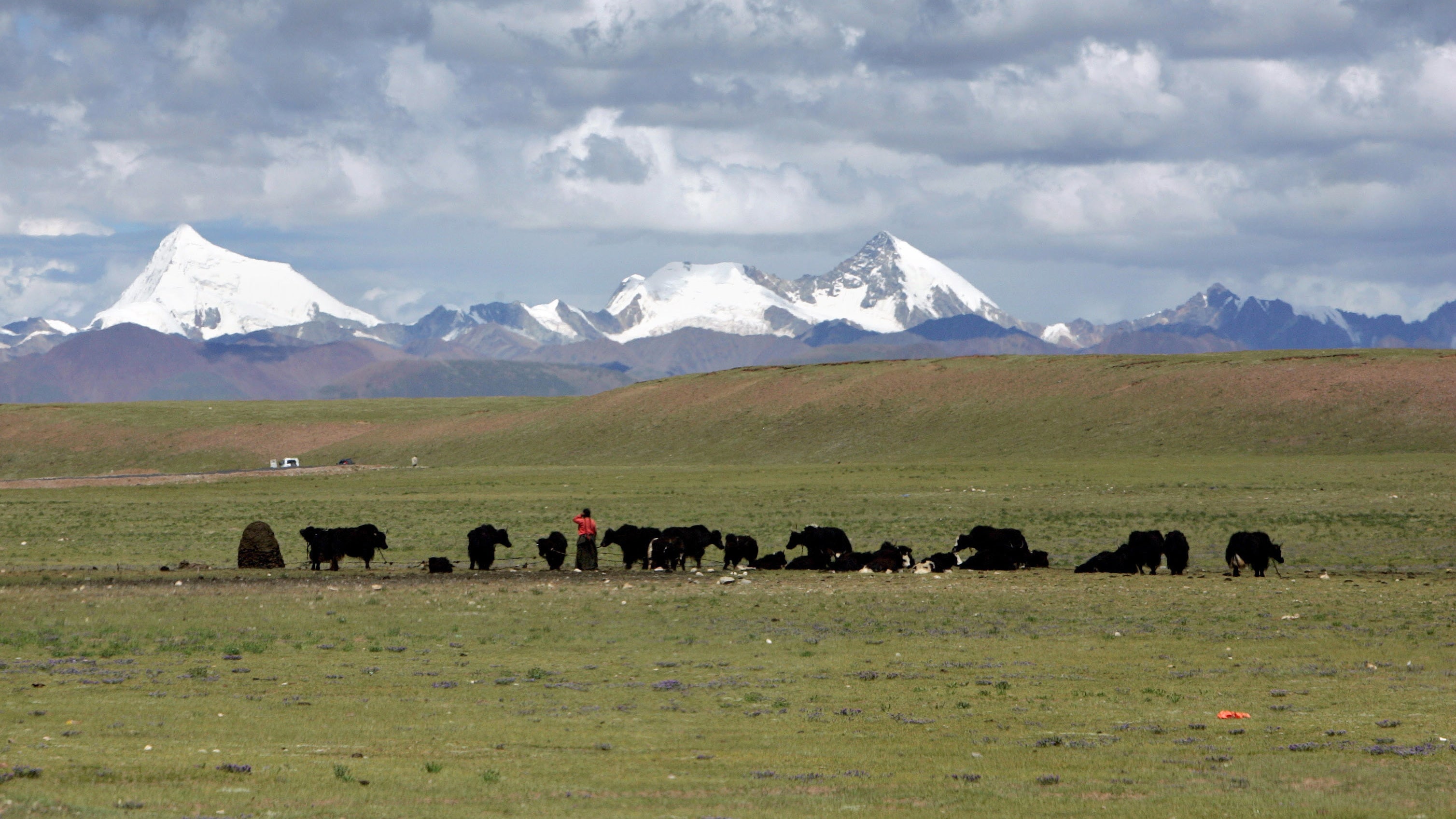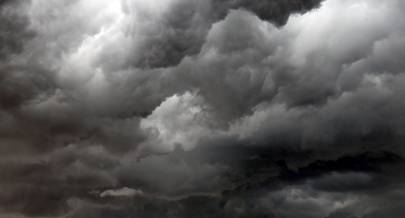Why can these SEA countries use cloud seeding?

Toggle navigation

The Best Samsung Galaxy S10 Plans In Australia
8 Movies And TV Shows About All The Money You Don't Have

Tim Cook: Troll

What Is This Snail Doing? A Gizmodo Investigation
China's Ambitious New Rain-Making System Would Be As Big As Alaska
George Dvorsky
Apr 26, 2018, 3:00pm

China's state-owned aerospace corporation is embarking on a plan that would see tens of thousands of fuel-burning, cloud-seeding chambers dispersed across the Tibetan Plateau in an attempt to increase rainfall in the region. It sounds impressive, but it's an open question as to whether this extensive rain-making system will even work, or how it may impact neighbouring communities.
When the Chinese government embarks on a project, it doesn't tend to think small, whether it be a state-led effort to eliminate sparrows or
a massive hydroelectric dam system with a reservoir extending for 390,000 square miles. China's latest mega-project, dubbed Tianhe (or Sky River in English), is equally ambitious. The hope is that it will increase rainfall in the Tibetan Plateau, an important source of freshwater for China and an area deemed vulnerable to the effects of human-induced climate change.
New
details about the project were published earlier this week in the
South China Morning Post. Reporter Stephen Chen managed to speak to a researcher directly involved in the study who asked to remain anonymous owing to the sensitive nature of the project. Indeed, this technology is an effort to boost rainfall, but it has its roots in the Chinese military's weather modification program. Weather machines have the potential to make life better for communities in need - but they could also be turned into potential weapons, wreaking meteorological havoc within an adversary's borders.
The Tianhe system is being developed by China's Aerospace Science and Technology Corporation, a state-owned defence and space firm also involved in lunar exploration and the construction of China's space station. Earlier this month, the aerospace firm forged an agreement with Tsinghua University and Qinghai province to set up an experimental large-scale array on the Tibetan Plateau.
The
concept behind this weather machine is not new, but it is poised to be the largest of its kind. To make it work, a large network of fuel-burning chambers will be installed throughout the Tibetan mountains. These chambers will seed clouds with silver iodide particles. Should all go according to plan, the net result will be increased rainfall along a region extending for 620,000 square miles, or 1.6 million square kilometers. That's practically the size of Alaska, and about three times the size of Spain. Chinese officials estimate an extra 10 billion cubic meters of rainfall will be produced each year, amounting to approximately 7 per cent of China's total water consumption, reports the
South China Morning Post. Tianhe is still very much in the experimental phase, though 500 units have reportedly already been deployed in Tibet, Xinjiang, and other areas.
The Tibetan Plateau is often referred to as China's "water tower," and for good reason: It's a critical source of several major rivers, including the Yellow, Yangtze, Mekong, Salween, and Brahmaputra. Literally billions of people are dependent on these rivers for freshwater, much of it trickling down from melting winter snow and glaciers. China's strategy could boost rainfall in a parched region that only sees about four inches (10 cm) of rain annually. The added rain, it is hoped, could spur economic development in China's western regions, while also mitigating the effects of climate change. Should nothing be done, the region is expected to experience severe droughts in the coming decades.
Each chamber will be installed on a steep mountain slope to draw moist air blowing in from south Asia. The chambers burn solid fuel to produce silver iodide; when the winds hit the mountain slope, the resulting upward draft should push the particles into the clouds above. The clouds, seeded with these crystalline structures, will then produce rain and snow (rain is produced when moist air cools and collides with aerosols floating in the atmosphere).
As reported in the
South China Morning Post, each chamber is expected to form a three-mile-long (5 km) strip of thick clouds. The system will be guided by real-time data collected from a network of 30 small weather satellites designed to track monsoon conditions over the Indian Ocean. The chambers will work in conjunction with other cloud-seeding techniques, such as particles dropped from planes and drones and even the use of ground artillery. Each unit will cost about 50,000 yuan, or $US8,000 ($10,560), so they're relatively cheap, and they're designed to work in high-altitude, low-oxygen environments. On the downside, the chambers won't work in low winds, or when the wind blows in the wrong direction.
The
South China Morning Post report makes no mention of environmental or political impacts of the system. Added precipitation could affect local ecosystems, induce flash flooding, and even create dangerous landslides. Tianhe is also bound to have an effect on China's neighbours, including India, Nepal, Laos, Myanmar, and several other countries; it's not immediately apparent if officials in these countries were consulted about the pending project. Finally, it's not clear if the system will even work.
"Research studies have shown that cloud seeding can increase rainfall over limited areas in some conditions, but it is controversial whether or not cloud seeding on such a large scale as the Chinese are attempting can lead to a regional increase in precipitation," said Jeff Masters, a meteorologist and weather blogger at
Weather Underground, in an email to Gizmodo.
Meteorologist Bob Henson, also with Weather Underground, says it's been surprisingly difficult to prove in a statistical way that weather modification helps boost rainfall and snowfall amounts.
"I wouldn't be shocked to see some local increase in rainfall and snowfall from the Tibetan project," Henson told Gizmodo. "The bigger question in my mind is how a project this massive could affect the regional atmosphere in unexpected ways, especially with the climate itself changing."
Janos Pasztor, a Carnegie Council senior fellow and executive director of the Carnegie Climate Geoengineering Governance Initiative (C2G2), said the
South China Morning Post report is short on details, and not enough technical information exists to judge the system's technological feasibility, nor its environmental or socio-political impacts. That said, he thinks the system appears plausible — but the added rain will come at a cost.
"Such weather modification does not 'produce' rain as such," Pasztor told Gizmodo. "Rather, it makes rain happen somewhere, which means that it will not happen somewhere else. This immediately means that ecosystems and people living somewhere else where it would have rained will no longer get this rain." Pasztor reasonably asked, "Has the impact of this been properly assessed?"
[
South China Morning Post]
Read More
Make Transformation A Way Of Business, Instead Of A GoalKPMG Powered Enterprise|
Sponsored
Sports Lovers Are Going Crazy for This Streaming ServiceDownload Now | Kayo Sports|
Sponsored
4 Australian Dating Sites that Actually Work for FreeTop Australian Dating Sites|
Sponsored
9 Tips For Taking The Best Photos On Your PhoneSponsored Content
You don't need a dedicated camera to take beautiful photos in 2018. Phone cameras are increasingly powerful, and with a little time and effort, you'll be able to take full advantage of them. Here are some tips and tricks to get you started.
This is just one of the 16 cancers caused by smoking.Make Smoking History|
Sponsored
Learn How To Set Yourself Up For The Retirement You WantAustralian Super|
Sponsored
 10 Questions We're Worried Game Of Thrones Is Never Going To Answer
10 Questions We're Worried Game Of Thrones Is Never Going To Answer
Game of Thrones returns for season seven on July 17, and there are plenty of major questions fans have had for years that will likely be answered during its seven-week run. However, there are still some confounding moments that have fled north of the Wall, and we're beginning to suspect their explanations might never...
.
RIP Samsung Headphone Jack
Here's What Happens When You Drive A Car With Tires Made Of 3,000 Nails
Pornhub Has Created A Bang Album
Here's How Rogue One Got Its Hands On Unseen Star Wars Footage
Succeeding online is easier than you thinkNetregistry|
Sponsored
Escape the rent trap with a $0 Savings Home LoanEasystart Homes|
Sponsored
Here's What Would Happen If A Giant Asteroid Struck The OceanGizmodo Australia
Curiosity Has Discovered Something That Raises More Questions About Life On MarsGizmodo Australia
by Taboola
Trending Stories Right Now
 Alert, The Samsung Galaxy S10 Is Now For Sale In Australia
Tegan Jones
Alert, The Samsung Galaxy S10 Is Now For Sale In Australia
Tegan Jones 08 Mar 2019 9:00 AM
Today's the day, people. If you've been waiting to get your hot little hands on a shiny new Samsung Galaxy S10, you can!
 Dell XPS 13 Review: This Time It's Practically Perfect
Alex Cranz
Dell XPS 13 Review: This Time It's Practically Perfect
Alex Cranz 08 Mar 2019 11:00 AM
The Dell XPS 13 has been so dangerously close to perfect for so long that the latest iteration left me a little surprised. I was turning it this way and that to find something I could fault it for, not because I wanted to unfairly ding the product, it’s just that nothing is perfect. But Dell has so refined this version of its best 13-inch laptop that the issues with it are all minute and deeply personal. This is a near perfect laptop.
Want Gizmodo's email newsletter?
Subscribe
Alert me about competitions & deals
Latest Deals
MWC 2019
Partner Content
9 Tips For Taking The Best Photos On Your PhoneYou don't need a dedicated camera to take beautiful photos in 2018. Phone cameras are increasingly powerful, and with a little time and effort, you'll be able to take full advantage of them. Here are some tips and tricks to get you started.
Trending Articles
About |
Advertise |
Contact
Terms of Use | Gizmodo International


 Now tell us what can those hardwares do when theres haze? Now, u cant possibly ask all sinkies to hide in the submarine to avoid the haze.
Now tell us what can those hardwares do when theres haze? Now, u cant possibly ask all sinkies to hide in the submarine to avoid the haze.








 10 Questions We're Worried Game Of Thrones Is Never Going To Answer
10 Questions We're Worried Game Of Thrones Is Never Going To Answer 











